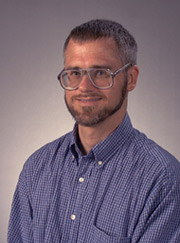Gregg B. Wells, PhD

Associate Professor
Contact
Cell Biology and Genetics
225C Reynolds Medical Building
College Station,
TX
77843
gbwells@tamu.edu
Phone: tel:979.436.0780
Biography
Dr. Gregg B. Wells received his B.A. (with distinction) in chemistry from Northwestern University in 1981. He earned his Ph.D. in biophysical and theoretical biology from the University of Chicago Pritzker School of Medicine in 1987 and his M.D. was awarded from the University of Chicago Pritzker School of Medicine in 1989. From 1989 to 1996 he completed his residency in anatomic pathology and fellowship in neuropathology at the Hospital of the University of Pennsylvania. He is certified in anatomic pathology with special certification in neuropathology by the American Board of Pathology. He joined the faculty at the Texas A&M University Naresh K. Vashisht College of Medicine in 1999.Education and Training
- University of Pennsylvania, Postdoctoral Training
- University of Chicago, M.D., Medicine, 1989
- University of Chicago, Ph.D., Biophysics and Theoretical Biology, 1987
- Northwestern University, B.A., Chemistry, 1981
Research Interests
- The general theme of the research in Dr. Wells' laboratory is the role of protein structure in disease, particularly in neurological disease. One area of study is the structure and function of the superfamily of neurotransmitter-gated ion channels that includes nicotinic acetylcholine, serotonin 5HT3, glycine, and GABAA receptors. Members of this superfamily are involved in drug addiction and alcoholism, neurodegenerative diseases such as Alzheimer's disease and Parkinson's disease, genetic forms of epilepsy, and neuropsychiatric disorders such as schizophrenia and depression. The lab is developing new approaches to elucidating the molecular structures of these ion channels from animals and bacteria. Cyclic nucleotide gated channels (CNGCs) are a second area of study. The team is interpreting their electrophysiological properties in terms of structure and thermodynamics. Hearing is a third area of study. Researchers are using computational models of calcium and potassium ion channels and mechanotransduction to explain electrophysiological function of cochlear hair cells. Fourth, analysis of genomes and tissue-specific transcriptomes of electrogenic animals (e.g., electric fish) is expected to reveal new aspects of lifecycles of ion channels. Explaining neurological diseases in terms of protein structure is a theme linking the neuroscience research with neuropathology, Dr. Wells' medical specialty.
Representative Publications
Lab Members
Research Associate
- Alexi Person